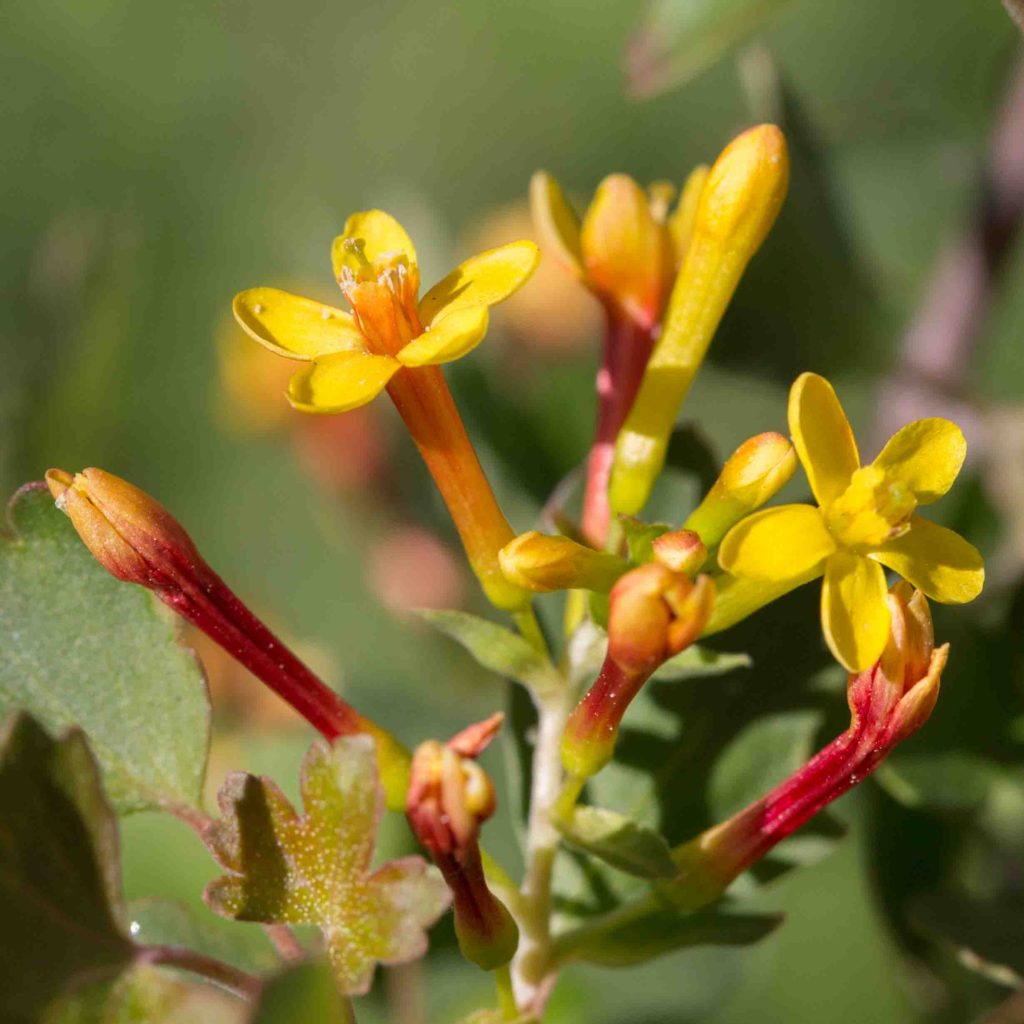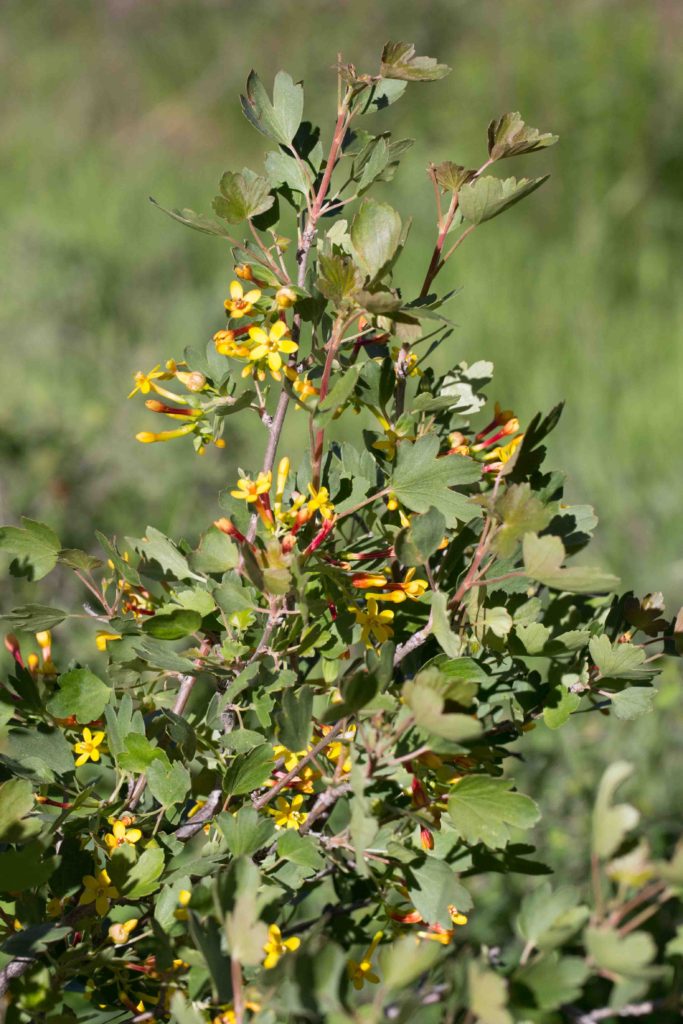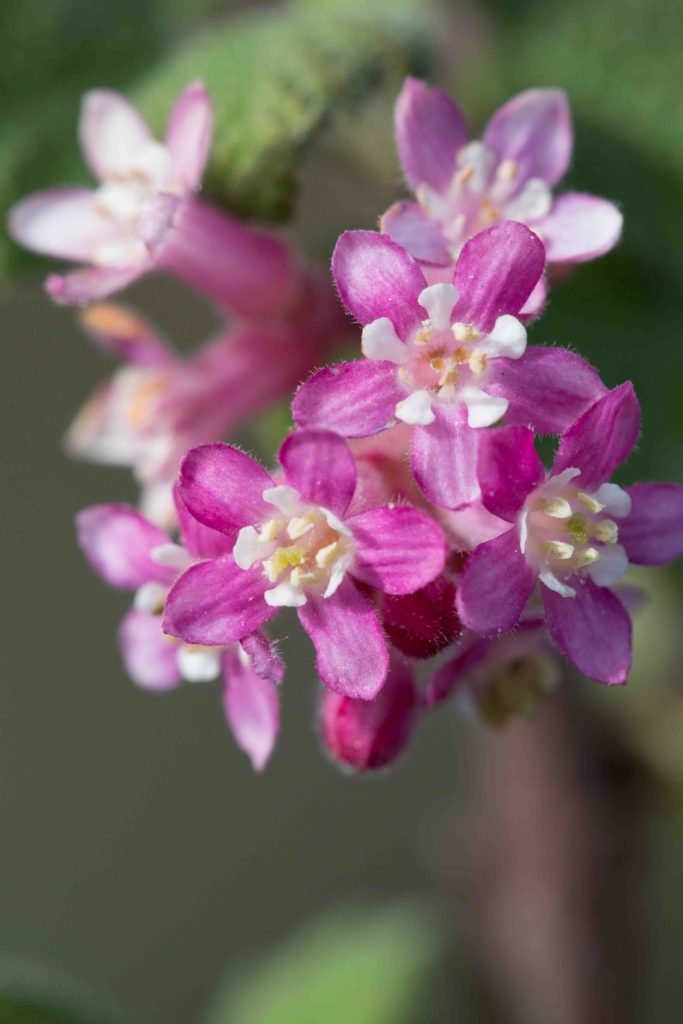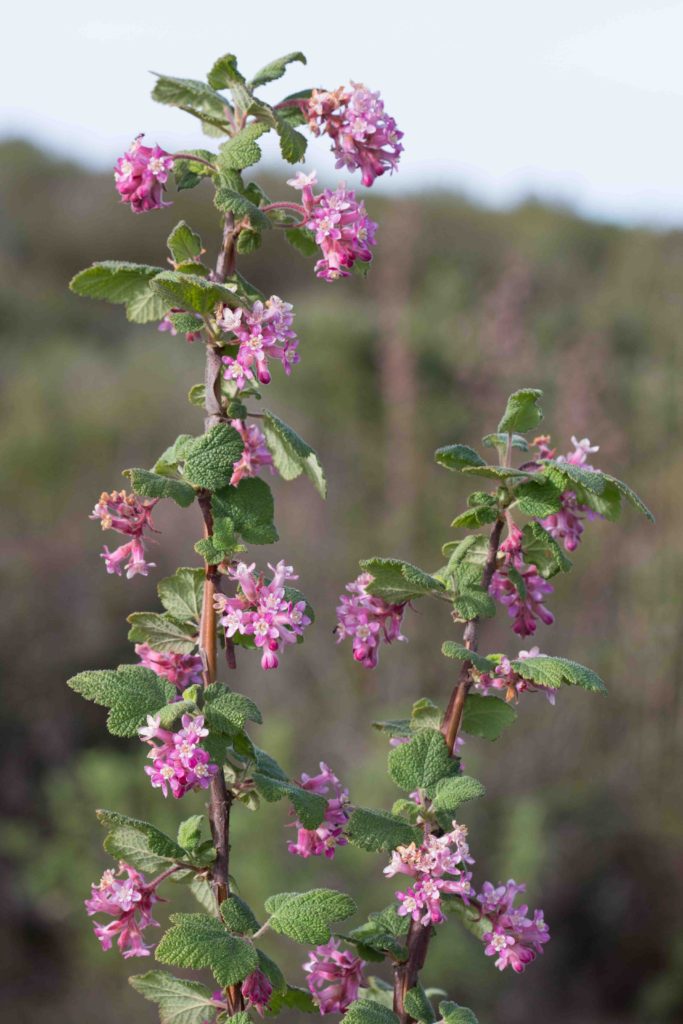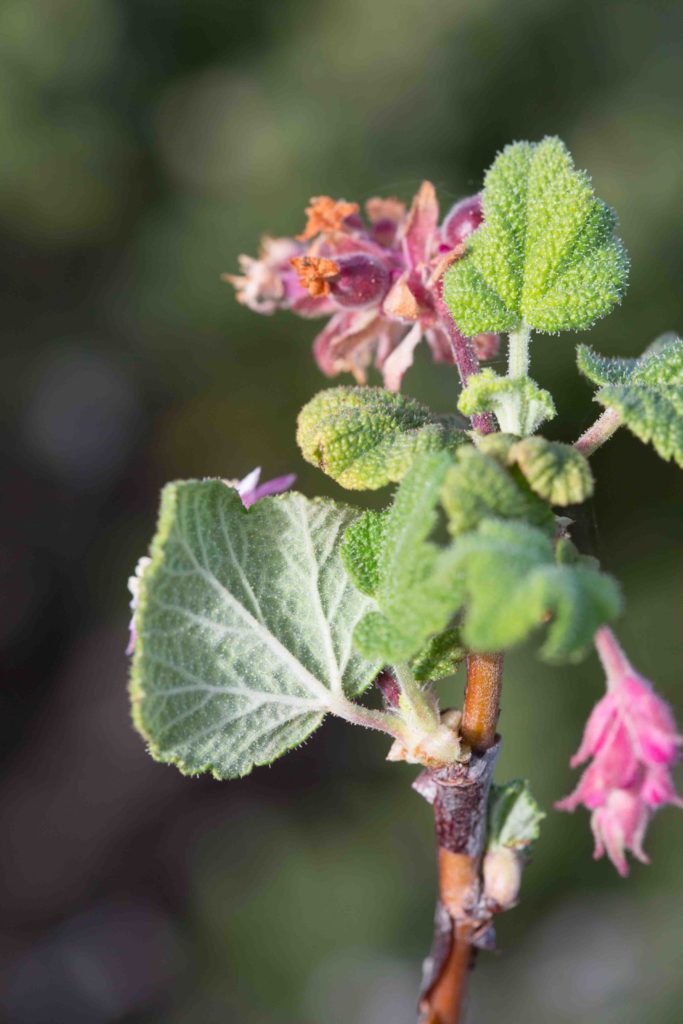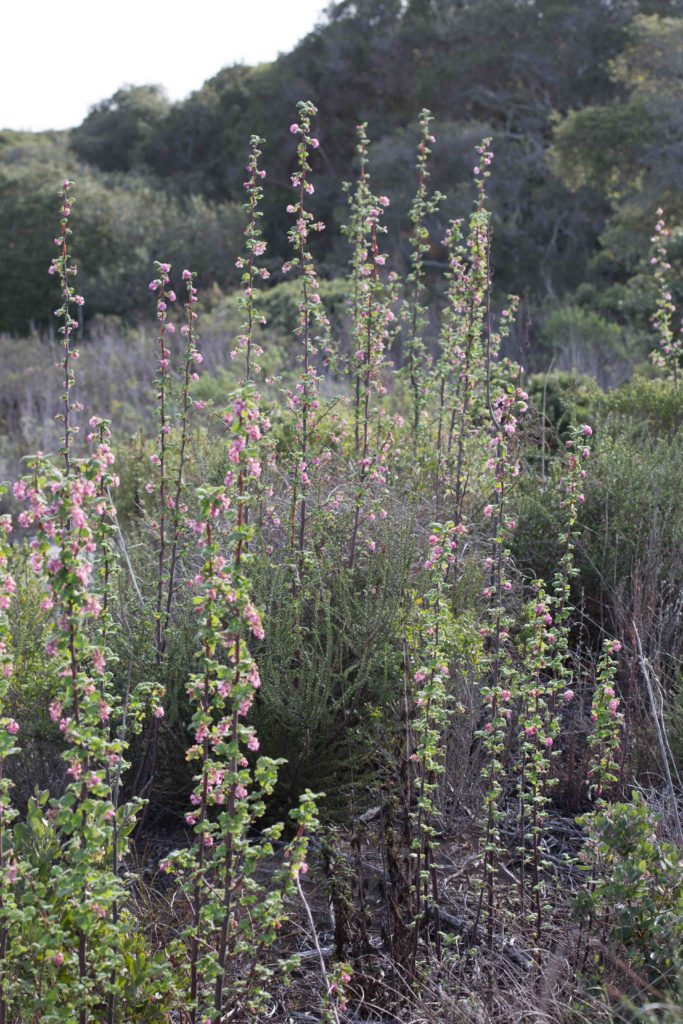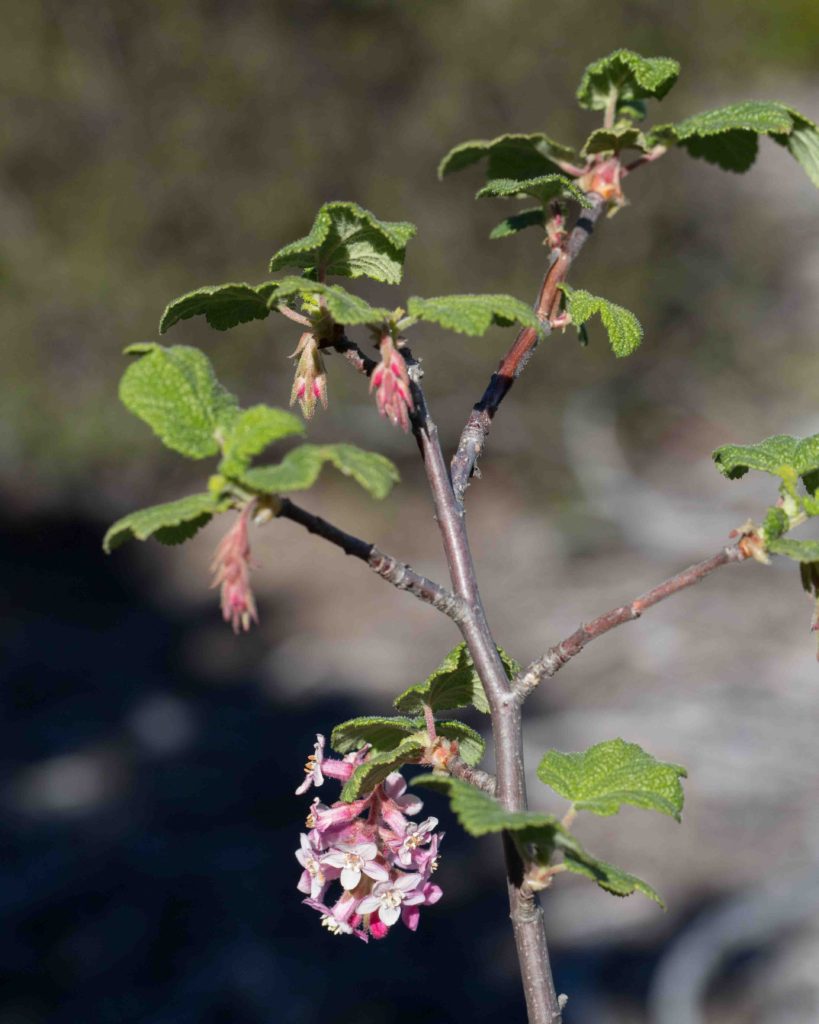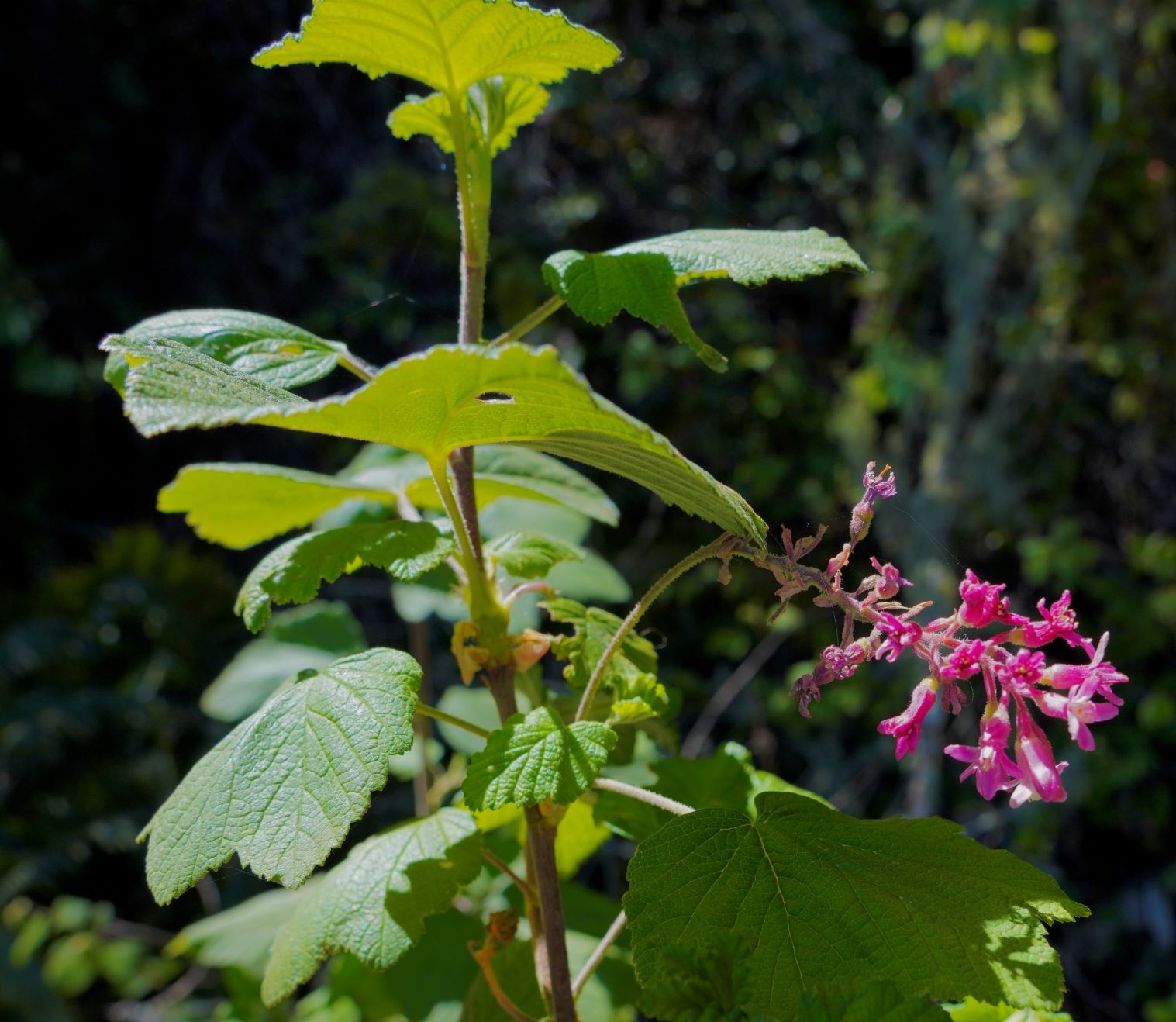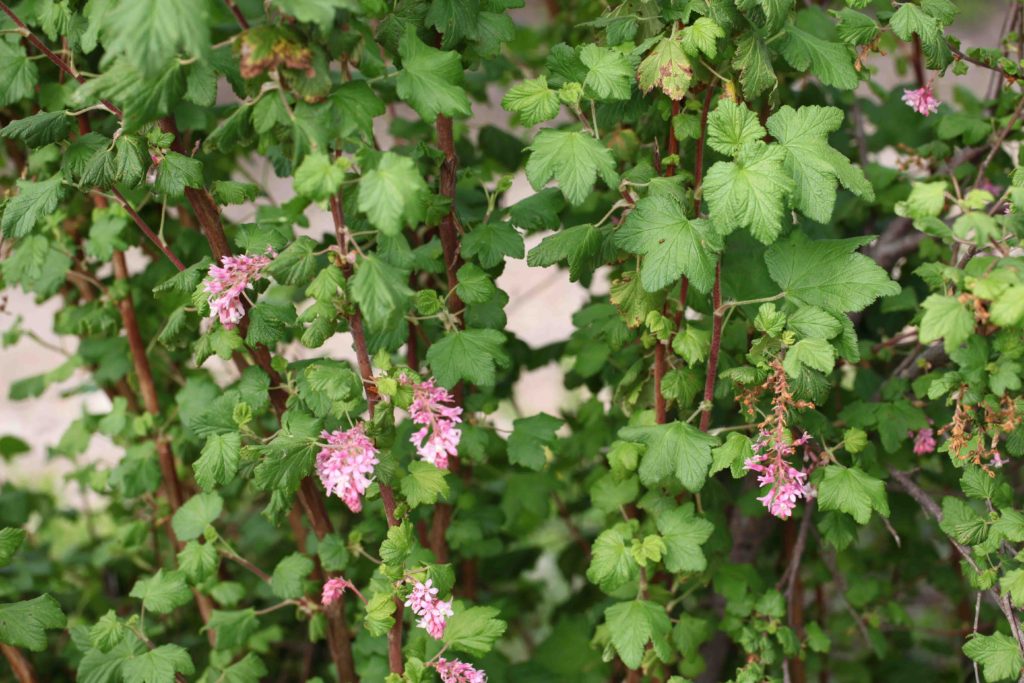Grossulariaceae: Gooseberry Family — Currants
The Gooseberry family contains a single genus Ribes, which includes both currants and gooseberries. These two groups can be distinguished by whether or not the stems have prominent and extremely sharp nodal spines. Gooseberries have them, currants do not. In addition, stems of certain gooseberries can be extremely bristly between the nodes; an important but not always reliable diagnostic feature.
Golden Currant – Ribes aureum var. gracillimum
Blooms:
Feb–May
Plant Height:
< 3 m
Flower Size:
Small
Origin:
Native
Habitat:
Streams and moist places
Notes:
Striking yellow flowers, aging red, distinguish this unusual currant which is found mainly in the Salinas Valley and the mountains to the east. There are 5–15 flowers in nodal clusters, a tube-shaped hypanthium, 5 spreading yellow sepals, and small erect petals. Fruits begin golden yellow, then turn orange and finally red. At that stage, they are tart but edible.
Chaparral Currant – Ribes malvaceum var. malvaceum
Blooms:
Oct–Apr
Plant Height:
1–2 m
Flower Size:
Small
Origin:
Native
Habitat:
Chaparral & oak woodland
Notes:
This shrub is smaller than the more common Pink Flowering Currant (Ribes sanguineum, see below). It has dull, olive-green leaves, 2–5 cm long, which are densely glandular-hairy, and tomentose on the lower surface. Stems also are glandular-hairy. The flowers grow close to the main stem in clusters of 10–25, and are deep pink to purple with hairy styles. The berries are dark blue to black and bitter tasting.
Pink Flowering Currant – Ribes sanguineum var. glutinosum
Blooms:
Feb–Apr
Plant Height:
1–3 m
Flower Size:
Small
Origin:
Native
Habitat:
Moist shaded places
Notes:
More common than Chaparral Currant (Ribes malvaceum, see above), and generally a larger and more widely spreading shrub. It differs in having a style that is not hairy, and leaves that are bright to dark green (not tomentose on the lower surface). Flowers are pale pink to rose, in drooping clusters of 10-25. The rounded leaves have many small glands, which give off a strong musky fragrance. Fruits are blue to black and lacking in taste. Photo #3 by CJH.
